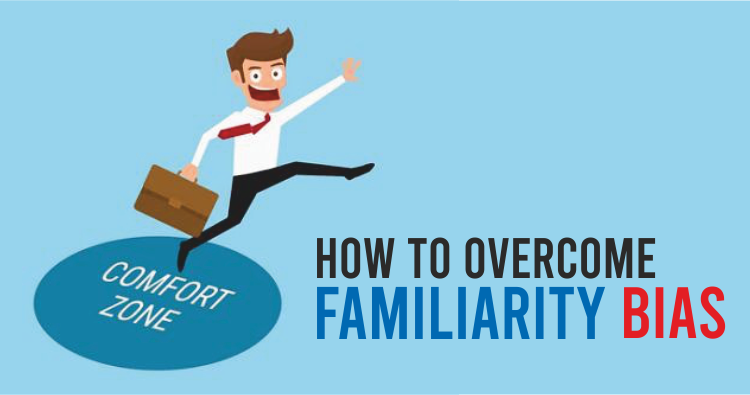- +91 8447496480
-


All about familiarity bias
“Investor’s chief problem and his worst enemy is likely to be himself.” – Benjamin Graham
We like to believe we make rational decisions. Not just that, we also believe that your feelings and emotions don’t play a role in your decisions.
Investing is no different. It is assumed that investment decisions are perfectly rational decisions. But, in reality, investment decisions are influenced by various behavioural bias. Familiarity bias is one such bias.
Familiarity bias is evident in the day to day life. Sticking to a few dishes on the menu, going to the same shopping centre, or taking the same route to office are some of the examples of familiarity bias.Familiarity bias is the preference to stay in comfort zones. Our minds want us to stay in the comfort zone and hates a change in scenario.
In investing parlance, familiarity bias dissuades us from investing in other assets or investment options that we are not familiarwith. As a result, our portfolios are not diversified and we miss out investing in options that could have been higher returns.
A typical example of familiarity bias is the over-allocation of debt assets such as fixed deposits, PPF etc. and almost no exposure in the equity market. Investors continue to save through these instruments as they have seen their parents and grandparents do the same.
What causes Familiarity Bias?
Loss aversion bias is one of the main reasons behind familiarity bias. Investors want to avoid losses and this attitude makes them confined within their comfort zones.
It is also influenced by the decisions taken by the people around them. The tendency to follow the herd mentality prevents investors to take the right decisions. While one investment strategy may be good for them, it may not be good for you.
Availability bias also affects as we have more information about the options that we are familiar with.
Effects of Familiarity Bias
Lose out on higher returns: Familiarity bias is one of the main reasons why most investors lose the opportunity to earn higher returns. E.g., people who park all their hard-earned money in fixed deposits are losing out the potential to earn higher returns in the long run by investing in equities. Such individuals overlook higher returns as they avoid risks.
Inadequate diversification: A diversified portfolio helps to reduce the risk of the overall portfolio and deliver better returns as well. The adequate diversification will differ from people to peopleas it will depend on their age and financial goals. Due to familiarity bias, investors stick to familiar asset classes and stocks that increase the risk associated with the portfolio.
Investing without proper research: While investing in familiar products or stocks, investors may not undertake adequate research. This may result in losses as investors may believe that they don’t need to research and study about these stocks. Hence, familiarity does not equate to profits.
How to Overcome the Familiarity Bias?
Knowing the causes behind familiarity bias is not enough. The most important part is knowing how to overcome the familiarity bias.
Evaluating the investment decisions on a regular basis will help to keep a check on the familiarity bias affecting your portfolio. The portfolio should have the right asset allocation and diversification.
Evaluating your portfolio from a distance will help you to take the right course correction approach which may include reducing your allocation to underperforming stocks or investing in a new investment option to diversify your portfolio.
Moving out of the comfort zone is not easy. To keep familiarity bias at bay, it is important to seek investment options that we are not familiar and reduce the exposure to familiar investment options. The portfolio rebalancing should be done objectively.
Knowing how to avoid irrational decisions will help investors to stay away from such behavioural biases.
There has always been a gap between the desire to create wealth and the actual ability to generate wealth. We originated the company with the idea to provide right financial solutions with client first approach.
C – 107, 1st Floor, Noida One,
Block B, Plot No - 8, Sector 62,
Noida, U.P-201309
+91 8447496480
Copyright © Money Compound. All rights reserved.